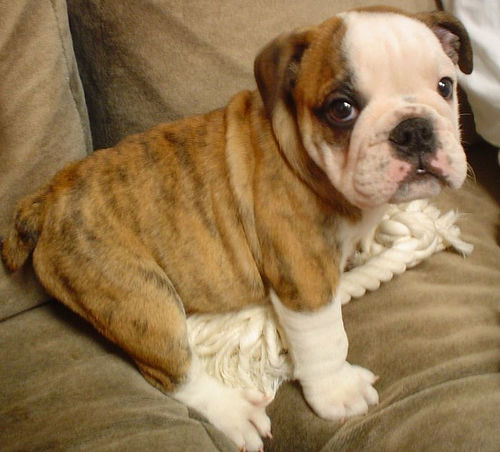 |
||
All about clicker training a puppy...Clicker training a puppy was conceived in the 1940's by Keller and Marian Breland, but didn't become popular until the 1990's. Most dog training methods are biased towards a reward/correction model. The reward is used to induce the dog to carry out the desired action. The reward is usually a treat, and then praise.Correction is used to stop the dog from carrying out undesired actions. You can correct your dog simply by using a harsher tone in your voice, checking the dog via the leash, by using your body language, or by squirting water via a water pistol. Clicker training is different from the traditional puppy training methods. Rewards, specifically a treat, are directly linked to the sound of the click from this hand-held device. A click signals an instant treat. The click must be delivered at the moment that the required behaviour occurs. Required behaviour- one click- one instant treat. To be effective as a training aid you must make sure that the clicker is only used to reward good behaviour. The puppy soon comes to associate a single click with an instant reward, so even if you make a mistake clicking- you must reward your puppy. Here are some tips to assist you with clicker training a puppy: 
Clicker training your puppy- the downside.The question is do you want to have to rely on a clicker for all of your puppy's training? Is her behaviour tied eternally to treats? What happens if you forget your clicker? Lose it? Will your dog still respond to you? The answer is probably not. You will have established, and reinforced a behaviour pattern, completely linked to clicking and rewarding.Clicker training is ideal for house training. But, ultimately you want your dog to readily respond to your commands under any circumstances. A well-trained dog is one that, after you have trained her, realises that she has to do what you tell her. And clicker training doesn't really communicate that. So if you decide to use the clicker for very early puppy training, you're going to have to eventually wean your puppy off the clicker.
Take it gradually. Providing you always use a command word for every action when you use the clicker, it isn't too difficult to phase it out. Simply go over each behaviour that you used when clicker training your puppy. Use the command word, and slowly but surely, ease down on the clicking and treating, and introduce verbal praise. Eventually, you can phase out the clicker, and the treats, and your dog's responses will be controlled solely by the tone of your voice. This is just one segment of our puppy-training guide.....

"
| ||
|
| Puppy Training Start Page | House-training a puppy. |Crate training a puppy. |Dog Names Start Page |Dog Videos Start Page | Return to Homepage Or you can .........
|
||
|
|
||